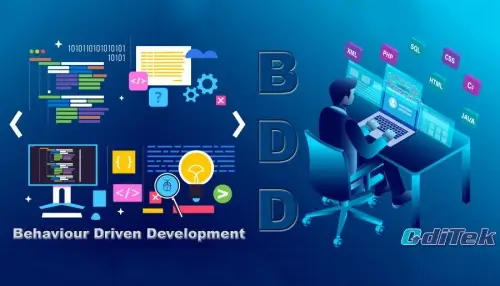What is Cucumber Testing Tool?
A Cucumber is a testing tool that supports the Behavior Driven Development Framework. It defines application behavior using simple English text that is defined by a language called Gherkin.
The Cucumber testing tool allows automation functional validation that can be easily read and understood. Initially, Cucumber was implemented in Ruby and then got extended to the Java framework. However, both the tools support JUnit.
OVERVIEW:
To improve the favorable position of the product testing, enterprises are these days stepping forward. They execute essential acknowledgment test situations while advancement is in-advance. This approach is ordinarily known as Behavior Driven Development (BDD).
Conduct Driven Development gives the chance to make test contents from both the client’s and the designer’s point of view. So initially, QAs, engineers, investors, all social affairs and conceptualize about which test situations ought to be passed to call this application or product fruitful. All the test contents are in basic English dialect, so it fills the need of documentation moreover.
Example
On the off chance that we are building up a client validation, a few key test situations need to get go keeping in mind the end goal to consider it a win.
1. The user should be able to log in with the correct username and the correct password.
2. The user should not be able to log in with the correct username and incorrect password.
3. The user should not be able to log in with an incorrect username and correct password.
How Does It Work?
When the code is prepared, the test contents are prepared along with it. The code needs to breeze through the test contents characterized in BDD. On the off chance, if it does not occur, code refactoring needs to be done. The code gets frozen simply after the fruitful execution of characterized test contents.

The thought is extremely straightforward and what we require is a specific end goal to get this idea actualized. And the appropriate response for this is – Behavior Driven Development Framework (BDD). Cucumber testing is one such open-source instrument, which bolsters conduct driven advancement. To be more precise, Cucumber is characterized as a testing system, driven by plain English content.
So what does Cucumber do? This may be very well depicted in the accompanying advances –
Cucumber reads the code written in plain English content in the component record. It finds the correct match of each progression in the progression definition. The bit of code to be executed can be diverse programming systems like Ruby on Rails, Selenium, and so on. Only one out of every odd BDD structure apparatus underpins each instrument. This turns out to be an explanation behind Cucumber’s ubiquity over different systems like Easyb, JDave, JBehave, and so on.
Cucumber underpins over twelve diverse programmings. Some of which includes –
1. Watir
2. PicoContainer
3. Spring Framework
4. Selenium
5. Ruby on Rails
Basic Terms of Cucumber Tool:
1. Feature File
2. Features
3. Tags
4. Scenario
5. Step Definition
6. Gherkin Language
In layman terms, here’s a brief description of the way Cucumber Testing Framework works –
The test cases of Cucumber are written in parallel with the software code development. These test cases are called ‘step’ in a Gherkin language.
1. First, the Cucumber testing tool reads the step written in Gherkin language inside the feature file.
2. Second, it searches for the exact match of each step in the step definition file. After finding the match, it executes the test cases and provides the result as pass or fail.
3. The code of developed software must correspond with the BDD defined test scripts. If it does not, then code re-factoring takes place. The code freezes after the successful execution of defined test scripts.
Advantages Of Cucumber Testing Tools Over Other Tools –
1. Cucumber bolsters different dialects such as Ruby and Java.net.
2. It meets the need for end-to-end test structure.
3. Cucumber offers code reusability because of straightforward test content design.
4. It allows the test contents to be composed without requiring information on any code.
Differences Between Cucumber & Selenium
1. A Cucumber is a testing tool based on BDD whereas Selenium is a browser automation testing tool.
2. Cucumber test scripts are written using Gherkin language syntax whereas Selenium test scripts are written in C#, Java, etc.
3. No conditional statements can be used in Cucumber whereas you can use conditional statements in Selenium.
4. Cucumber enables BDD testing on browsers so you need to write the scenarios first starting with the BA team whereas Selenium automates UI testing on browsers.
As we now know that BDD tries to bridge down the communication gaps between team members, promotes a better understanding of the customer, and fosters communication with the real world, so it is essential to understand your business’s requirements, and if BDD fits that requirement.







